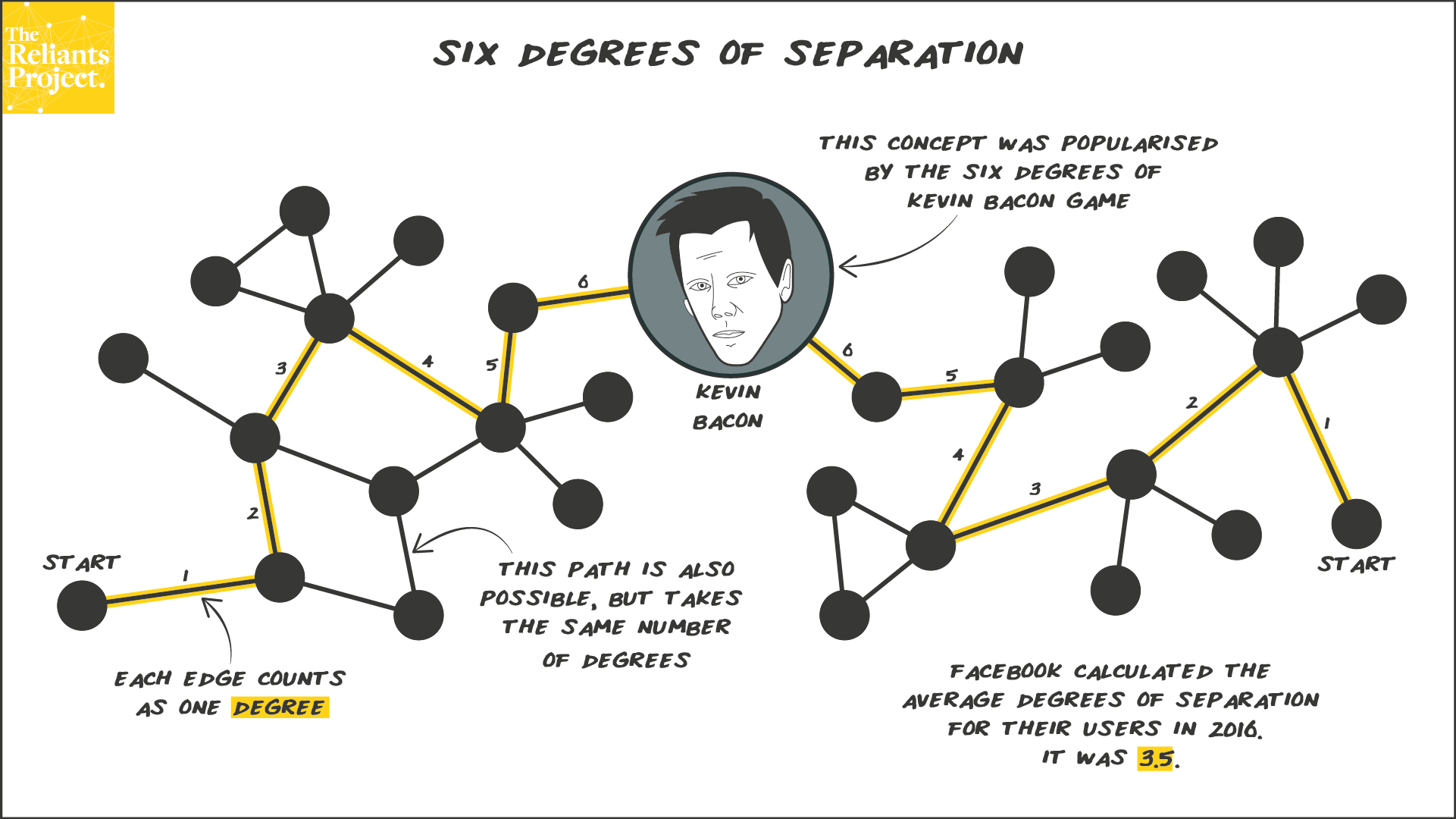This is the 7th post in a series. If you’re not familiar with how to read network graphs, you might prefer to start with Concept 1 or Concept 2.
Many people have heard about the concept of six degrees of separation because of the popular Kevin Bacon game that was thought up by 3 college students in the late 90s. The game is centred around finding a path from any actor to Kevin Bacon based on overlapping movie appearances. The concept is actually much older, from a short story called Chains written by Frigyes Karinthy in 1929. Since then it has captured the imagination of mathematicians and sociologists alike.
The person most commonly associated with the concept is Stanely Milgram. He was focused on what’s called the small world problem. He wanted to figure out the average path length between two Americans. He asked people in Omaha, Nebraska and Wichita, Kansas to try and get a letter to Boston, Massachusetts by sending it to someone they knew that they thought could help. Of the letters that made it to the destination, the average path length was 6. While he never actually described it as six degrees of separation, he was the one who demonstrated it. Facebook did a study to measure it more recently and found that it was 3.5 for its users.
There doesn’t seem to be an end to the ideas that those 3 college students sparked:
- A book by the people who originally created the idea called Six Degrees of Kevin Bacon
- A board game by Endless Games called Six Degrees of Kevin Bacon
- A photography book by Andy Gotts called Degrees
- The Oracle of Bacon website, which connects Kevin Bacon to any other actor
- A charitable organisation called Six Degrees
- An analysis complete with a database from two data analysts
Ready for the next concept? The next one in the series is Concept 8: Metcalfe’s Law and Network Effects.

